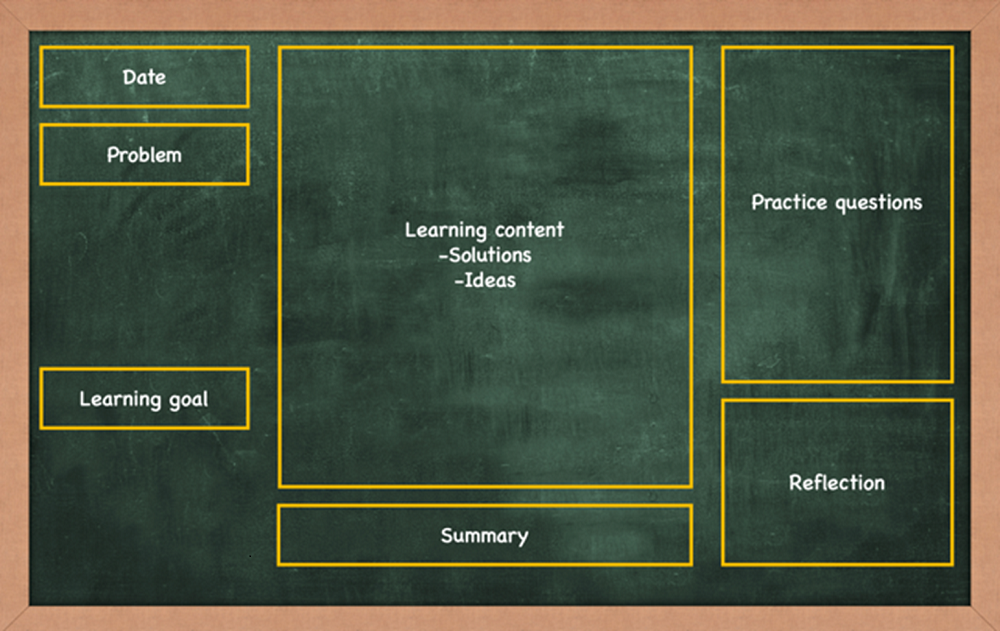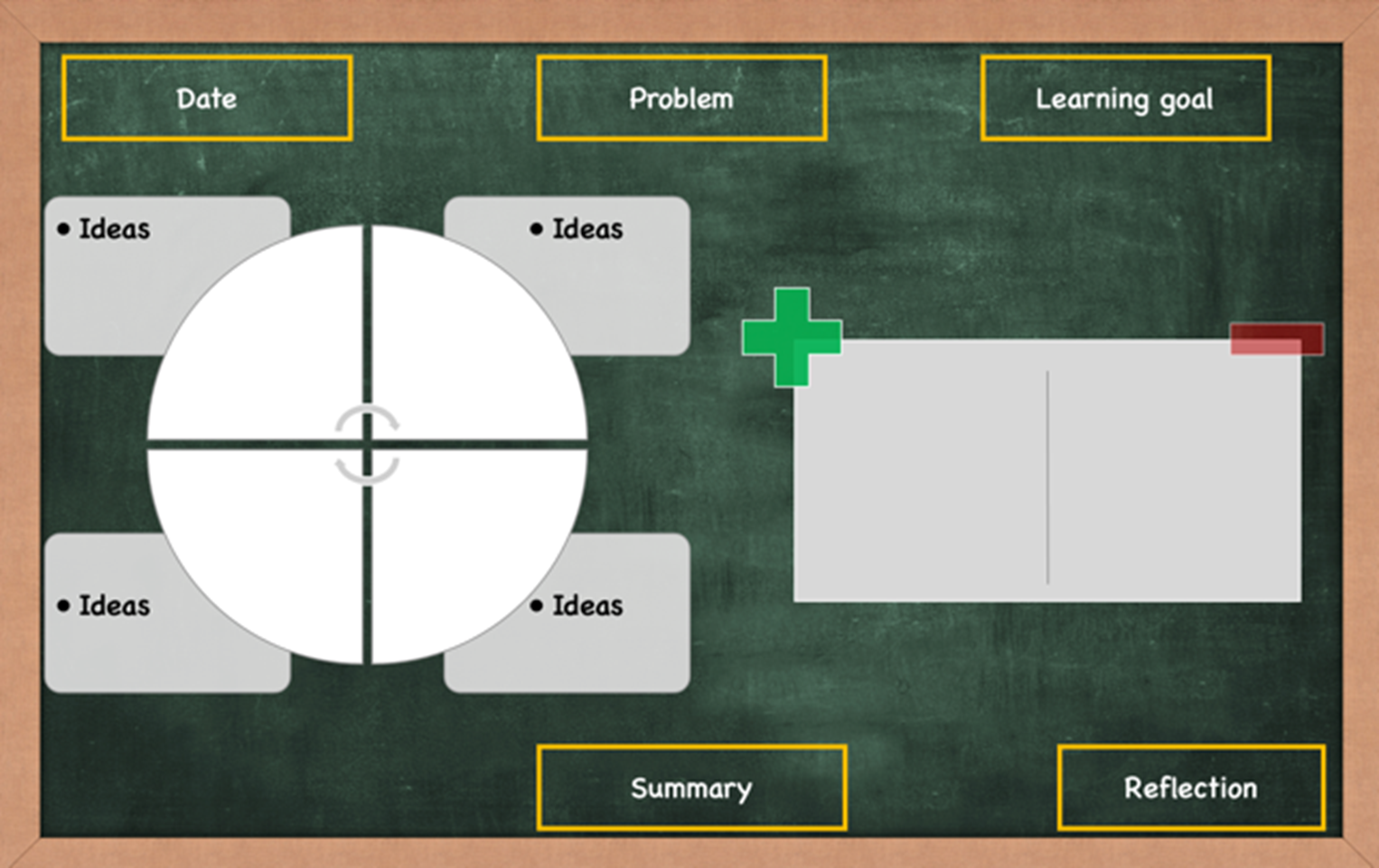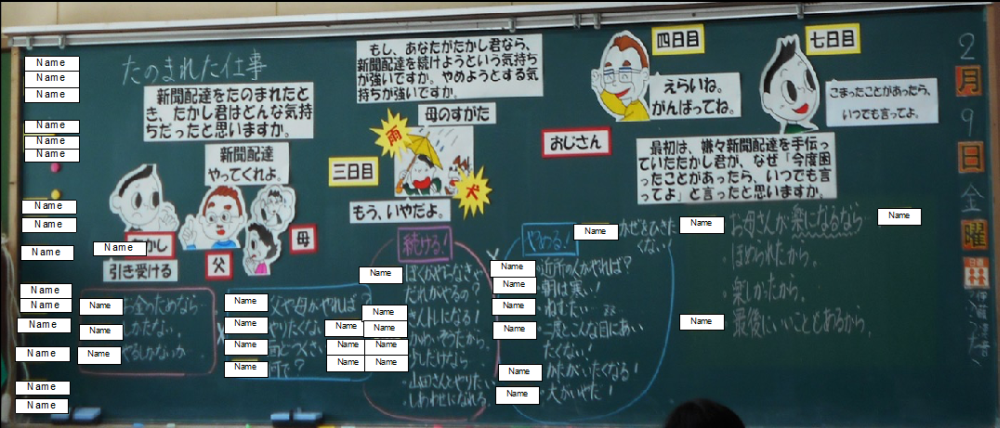‘Chalkboard? Who uses those anymore?’. As smartboards, tablets, and laptops have become commonplace in classrooms, the humble chalkboard that was once a pretty big deal in teaching practice has been relegated to the role of a relic of the past.
However, before we dismiss the chalkboard as a ‘dinosaur,’ let's take a moment to consider its true potential, and how you can bring it into your own teaching practice.
My first encounter with Japanese board writing
My experience as a teacher and researcher in Japan has allowed me to observe and study classrooms in depth. The first thing that caught my attention was the use of chalkboards. Sharing the same astonishment as Ermeling (2015), I wondered, ‘Why does Japan seem to lag in adopting 21st Century technology despite its reputation for technological advancements?’
I gradually learned how this seemingly rudimentary instructional medium is an indispensable teaching practice in Japan, termed ‘bansho’. Teachers plan and organise what to write on the board and use it to engage students in the lesson actively. This practice allows for an immersive learning experience that encourages student participation and collaborative knowledge building (Tan, 2022)
So, what do the different elements of bansho look like, and how can you implement it into your own teaching practice?
Six strategies for an effective bansho
B is for Balance: The balance and segmentation of the board can have a significant impact on its overall composition and effectiveness as a classroom tool. When you plan your board, consider how to divide the space to serve different purposes. This action is termed a ‘stage setting’ by Greiffenhagen (2014). Building on Chiba’s work (2016), one approach is the divisional style (below), which involves dividing the board into 2 or 3 segments horizontally.

Another approach is the aggregate style (below), which involves diffusing information from the centre, or converging from the periphery towards the centre.

A is for Attention-Grabbing: As educators, we know that capturing students' attention is key to maintaining engagement in the classroom. You can incorporate attention-grabbing features in your board, such as colourful cut-out pictures, photos, and manipulatives. But keep in mind that the materials you choose to display are intended to aid in students' understanding and should not be considered mere decorations.
N is for Nameplate: Nameplates may seem like a simple tool, but they can have a powerful impact on the classroom environment. By assigning nameplates to students, you can create a sense of ownership over their ideas, and students will feel valued and heard. When a student shares an opinion or response, you can place their nameplate next to it to acknowledge their contribution.
Furthermore, nameplates can serve as a visual aid to help your students see the connections and differences between their ideas and those of their peers. As discussions or group work progresses, you can move the nameplates around or group them to show how ideas evolve or connect. This can also help your students see how their individual contributions fit into the broader conversation.
S is for Space: It’s natural to feel like we must fill every inch of the board during a lesson, but leaving some blank space can be beneficial. This creates a sense of openness and possibility for discussion and allows unexpected ideas or student contributions to be added to the board. From a student's perspective, seeing the board slowly fill up with interactions between teachers, classmates, and learning materials shows how the bansho is built collaboratively as a classroom artefact.
So, don't be afraid to leave some blank space on the board during your next lesson. Embrace the possibilities of open discussion and collaborative learning and see where the bansho takes you!
H is for Highlighter: Using highlighters such as lines, arrows, and different colours can connect students' ideas and draw attention to key points during a lesson. For example, you can use lines or arrows to connect related ideas or concepts, making it easier for your students to see the connections between different pieces of information. This can be especially helpful in subjects like science or history, where there are often many interconnected concepts to understand.
Using colour to emphasise key points or important vocabulary can help students focus on the essential information. How the colour serves different functions (e.g., white as a standard colour; yellow for key points; blue for ‘pros’, red for ‘cons’) can also be decided beforehand and shared with your students.
O is for Order: When preparing for your board, it's important to consider what information to include and when to write it. This can help create a coherent and well-organised story that guides students through the material logically. For example, starting with a key question may be helpful, followed by a learning goal.
From there, you can use the bansho to build on students’ solutions and ideas while presenting thought-provoking prompts. Finally, end the lesson with a summary or reflection, preferably from the students. Anticipating students’ responses can be a valuable approach when planning the order and layout of the bansho. One way to do so is to examine their notebooks and other classwork. This can give you valuable insight into how they understand the learning content and help you to identify areas where additional clarification may be needed.
Final thoughts
While many may consider the chalkboard a relic of the past, the Japanese teaching practice of bansho has shown us how this seemingly outdated instructional tool can be a valuable asset in our modern classrooms, enhancing your teaching and promoting collaborative and active learning among our students.
References
Chiba, N. (2016). Bansho juu soku: bansho no kihon to kanousei (The Ten Commandments for Writing on Blackboard by Teacher : The Basic Rules and The Possibilities). The Japanese Journal of Primary Education, 17, 80-90. https://ci.nii.ac.jp/naid/120005960741
Ermeling, B. (2015). Lessons learned from a chalkboard: Slow and steady technology integration. Teachers College Record, 13, 1-6.
Greiffenhagen, C. (2014). The materiality of mathematics: Presenting mathematics at the blackboard. The British journal of sociology, 65(3), 502-528. https://doi.org/10.1111/1468-4446.12037
Tan, S. (2023). Variations of Board Writing Styles in Japanese Schools: How Is It Related to the Teaching of School Subjects?. The Teacher Educator, 58(3), 347-367. https://doi.org/10.1080/08878730.2022.2140237



